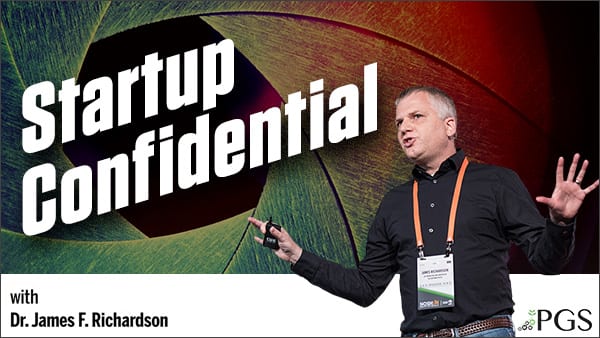PODCASTS / E115

Episode 115 – Direct to Consumer is Toast for Founders
April 1, 2024
In 2020, as Covid up-ended our lives, I fielded lots of inquiries about how to make use of Direct-to-Consumer sales.
At the time, if you remember, e-commerce sales overall had just exploded. Americans received multiple stimulus checks, payroll protection, and could not spend money at events or restaurants. Savings ballooned in a country that does not save. America was trapped at home with multiple digital screens and flush with cash.
If we look at the monthly sales data collected by Bricks Meets Clicks, run by David Bishop’s team, online grocery sales quadrupled in just one month, March 2020, and kept growing steadily for the next 18 months or so. Online grocery (home delivery from the store, pickup at the store and ship-to-home from warehouses like Amazon) eventually peaked just over $9B monthly in early 2021. And then it slipped to around $8B monthly in most of 2022. On an annual basis online grocery hit a peak in 2021 and slipped a lot in 2023.
Early signs are showing more loss of usage by lower income consumers in 2024.
What’s most important to note is that online grocery has not followed the topline pattern of overall grocery. It has not grow artificially due to inflationary price increases – you know, the ones taken by retailers in 2022 and 2023. So, online grocery is actually declining on an inflation-adjusted basis. And it is declining its share of grocery.
What appears to be happening is withdrawal from online grocery at the lower end of the income scale combined with decreasing order values. Instacart especially has helped make this enormous surge in online grocery possible.
But the fee structure and tips required really add up if you are doing most of grocery shopping this way. While affluent homes may have switched to 100% of groceries via Instacart during the first two years of the pandemic, this is simply not viable for middle-class homes. So, there has been natural reduction in online cart size.
There are only so many households who feel their personal time is so valuable that they need to eliminate grocery shopping in-store for a substantial chunk of their groceries OR who just can’t get to the store today for something they need.
The real net benefit of online grocery ordering to founders of consumer brands remains one thing: the relatively high ROI for Instacart ads – what we might call – modern trade marketing at the point-of-click. Otherwise, it may have honestly peaked.
Online trade advertising is actually accessible to Phase 1 founders because, like Amazon ads, you can adjust your spending in tiny increments suited to small budgets. There is no huge, up front expense as there is for endcaps or display shippers.
So, to summarize, the online CPG sector was overhyped, yes, but the accidental benefit was the emergence of Instacart and Walmart+ advertising platforms for broke founders.
None of what I’ve just gone through addresses the Dr. Squatch phenomenon – the explosion of direct-to-consumer brands from 2020 onwards, including in consumer packaged goods.
I’ve worked with some of these fast growers, and here’s what I’ve learned or deduced from afar. And it’s not favorable.
Of my dozen or so clients who have tried DTC as a revenue source, only two could make money in this channel. A third had to wait until the business was $10M in order to break even post-pandemic.
Direct to consumer brands require an Average-Order-Volume in reasonable proportion to their high packaging and shipping costs, both of which permanently ballooned after the pandemic got going. In most cases, selling even a case of your products direct-to-the consumer is just not profitable. At all.
AOV usually needs to be, get this, $100 or more to turn a profit on every order. Usually, you need something flat and lightweight that can ship through the USPS system (e.g. Dr. Squatch and Earth Breeze laundry sheets). Not many CPG items can ship in a flat, padded mailer. Almost none.
Acquiring money-losing customers is not a business unless you really know that you can dramatically reduce costs at some level of scale you have a way to reach (i.e. you have play money to spend to cover the leakage).
Although Liquid Death did get thousands of punk rock fans of the brand’s videos to pre-order entire cases of a water they had never consumed, this is just not feasible in most CPG categories. Sampling or single unit trial purchases become critical to building an initial consumer base. And there is just no way to sell CPG products one by one via dropshipping. The revenue model won’t work. Ever.
Grocery DTC got most of its press for large AOV brands in the meal kit sector: brands like Freshly, Blue Apron and Daily Harvest. These all have the kind of high order size that gives them a shot at making money with each order. Not necessarily, though, if fulfillment leads to tons of damaged and refunded product.
The best role that DTC has proven out for most consumer brands is to offer local, geo-fenced fans of your brand a way to buy cases of product before you have the ability to sell case packs into retail locations. Dropshipping fees within your local metro region are much easier to swallow for a small startup than national dropshipping charges for the same product.
DTC can be used as an early fan insights and product development lab based on your home market. And it may be break-even. I would not plan to scale ANY CPG business DTC unless you can make the AOV requirement above. Just forget the hype.